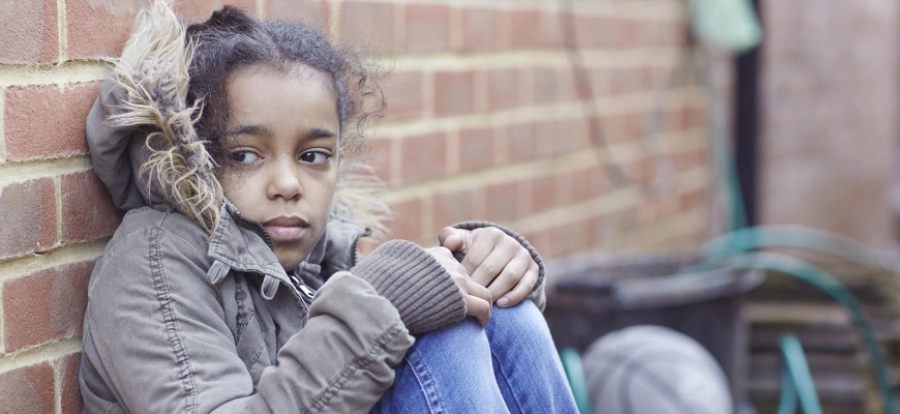These are real responses from teachers who didn’t know what domestic abuse is and how it is linked to child protection.
- Two women are killed by their partner every week in the UK [source].
Men can also be victims of domestic abuse. Domestic abuse is a crime. A new law was introduced at the end of 2015 which means that coercive control (emotional and psychological control) is now also recognised legally as domestic abuse.
- Every week, three women commit suicide as a result of domestic abuse.
- One in four women will experience domestic abuse in their life.
Schools are the single biggest opportunity we have to eradicate domestic abuse. Children living in a home where there is domestic abuse are in need of protection.
- 750, 000 children witness domestic violence every year (www.refuge.org.uk)
Even children who see or hear domestic abuse will be suffering from emotional and psychological harm, which is a child protection Issue. Schools need to integrate awareness about domestic abuse in order to safeguard their children effectively.
Why should schools get involved with Domestic Violence and Abuse (DVA)?
"It is important for schools to recognise changes in pupils and parents."Whether a school likes it or not, they already are involved with Domestic Violence and Abuse because, statistically, all schools will have children attending them (based on the sources above) who are living with Domestic Violence and Abuse, which is therefore a safeguarding issue for schools.
Schools need to understand what Domestic Violence and Abuse is so that they can spot the signs should children, parents or colleagues talk about them. Schools can make a difference by:
- Making sure their staff are trained to spot the signs and symptoms of domestic abuse in children, parents and colleagues.
- Ensuring that staff who come into contact with parents are trained in spotting signs and symptoms of domestic abuse, and know how to talk to parents who disclose.
- Ensuring that there is a clear protocol for whom to refer children and parents to in the event of a disclosure.
- Developing age appropriate materials to teach children about what DVA is, the different types of domestic abuse, and how the victim is groomed at the early stages of the relationship.
What is Domestic Abuse?
Domestic abuse is all about control. Pat Craven worked with perpetrators, and she found that they exerted control in the following ways:
- Physical violence and threats.
- Isolating the victim.
- Calling the victim names and putting them down.
- Crying, threatening to kill himself/herself, saying they do it because they love you.
- Lying, denying, blaming.
- Calling you a bad parent and turning the children against you.
- Treating you like a domestic slave or servant, controlling money.
- Rape, keeping you pregnant, withholding sex, won’t take "no" for an answer.
What is the impact of Domestic Violence and Abuse on children, and how does this link to child protection?
We know from the references above and child protection training, that changes in behaviour, appearance, health, mental health, ability to learn and attitude can be signs that child abuse could be occurring. However, it is less well known that Domestic Violence and Abuse can lead to similar changes, and it is important for schools to recognise this so that interventions"Primary pupils are at the age where children are most at risk." can involve the abused parent as well as the child in need of protection. In protecting parents, we are protecting children.
According to Refuge: “The physical, psychological and emotional effects of domestic violence on children can be severe and long-lasting. Some children may become withdrawn and find it difficult to communicate. Others may act out the aggression they have witnessed, or blame themselves for the abuse. All children living with abuse are under stress.”
That stress may lead to any of the following:
- Withdrawal.
- Aggression or bullying.
- Tantrums.
- Vandalism.
- Problems in school, truancy, speech problems, difficulties with learning.
- Attention seeking.
- Nightmares or insomnia.
- Bed-wetting.
- Anxiety, depression, fear of abandonment.
- Feelings of inferiority.
- Drug or alcohol abuse.
- Eating disorders.
- Constant colds, headaches, mouth ulcers, asthma, eczema.
Who should we contact if we suspect Domestic Abuse?
Emergency support - Always call 999 in an emergency.
- The Police 101 – To log an incident. The police may or may not take action, but the recording of the incident protects the victim and the children.
- Child Protection Team – Remember that any situation that puts children at risk of any kind of harm, be it from sexual, physical, emotional, psychological abuse or neglect is a crime and should be reported.
- If an adult tells you about a Domestic Violence and Abuse incident, encourage the victim to call the Freephone 24 hour National Domestic Violence Helpline on 0808 2000 247 FREE. Male victims can call 0808 801 0327.
- Children can also call The NSPCC who have a FREE 24 hour helpline: 0808 800 5000. They can also call Childline any time FREE on: 0800 1111.
How can we stop Domestic Violence and Abuse through Personal, Social and Health Education (PSHE)?
I would argue that teaching children about Domestic Violence and Abuse is our best way of preventing it. If we can teach our five-year-olds how a nice person treats you and how an unkind person treats you, then we may prevent the current epidemic of domestic abuse for the future generation.
Teaching children about domestic abuse in age appropriate ways not only educates them, but opens up a potential avenue for any child currently living with domestic abuse to reach out and get support for themselves and their parent.
Primary schools in particular know their children well, and are more likely to have the trust of pupils and parents. This is also the age at which children are most at risk. Primary schools are more likely to have a relationship with parents and may be the only ‘safe’ place that a parent comes into contact with if they are living with Domestic Violence and Abuse.
If schools see parents at the school gates with bruises, or if parents tell schools about violence against them, then schools are duty bound to enquire and support further due to their child protection obligations.
On 10th January 2016 the Joint Committee on Human Rights said it would be better if schools were "required broadly to teach the same curriculum in PSHE" and that this should include issues in relation to violence against women and girls. [Source]
What more can schools, as employers, do to stop DVA?
If you are aware that any staff members in your school employment are suffering from domestic abuse, then you need to protect them and, if applicable, their children.
Schools, as employers, can have a positive impact on eradicating DVA in the following ways:
- One of the stages in the development of an abusive relationship can be that the perpetrator isolates the victim, which can lead to the victim giving up work. Some victims give up work as their mental health or their physical well-being is deteriorating as a result of the abuse. Schools need to be aware of this and take time to enquire when women resign from their roles. Work may be one of the last points of contact that a victim has outside the home, and leaving employment puts them even more firmly in the hands of the abuser.
- Schools need to become familiar with what abusive behaviours are (see above) and to have a zero tolerance approach to those behaviours in the workplace.
- Schools also need to take seriously talk and attitudes which, in any way, could be seen to support domestic abuse.
- Employers can offer staff training on domestic abuse. This would not only mean that the workforce know the signs and symptoms in order to help victims, but it would also give an opportunity for people currently living with domestic abuse to come forward for support.
- Where employees’ work seems to deteriorate, rather than just putting them into disciplinary proceedings, sacking them or offering them professional skills training, take the time to ask them if anything is going on at home which is affecting their performance and know how to support them if they tell you about domestic abuse. Adults living with abuse often find it hard to concentrate and perform at work.
Domestic abuse is a crime and harms our children. Together we can make a difference.
How do you combat domestic abuse in your school? Let us know below.
[Image Credit: NSPCC]


















